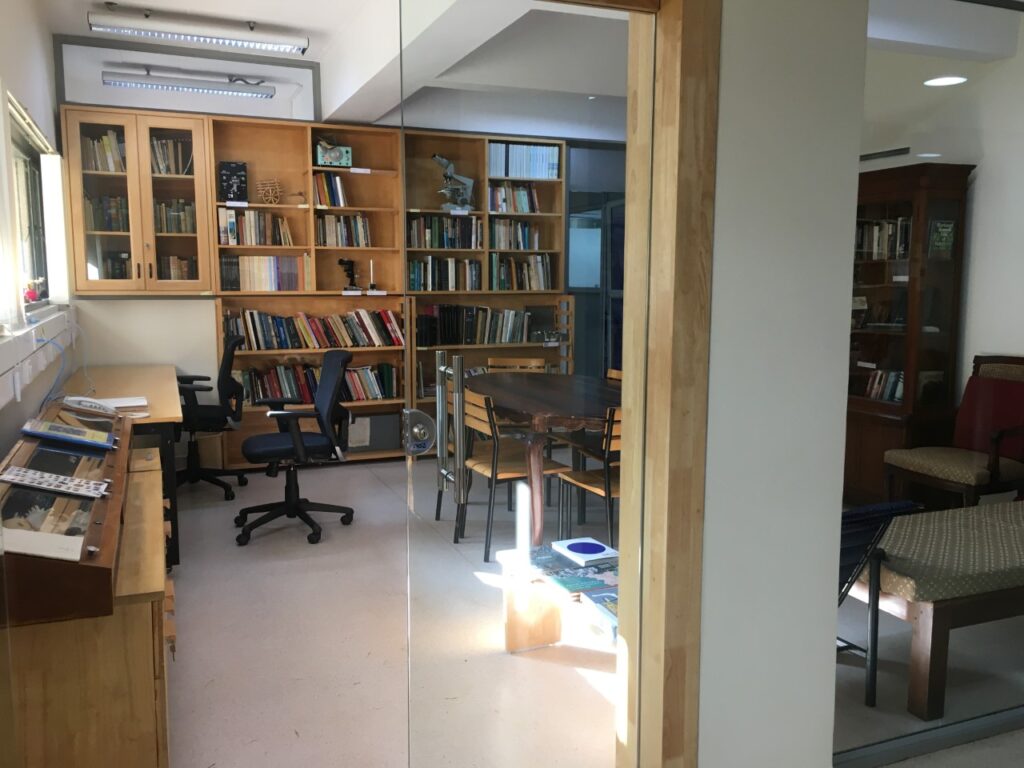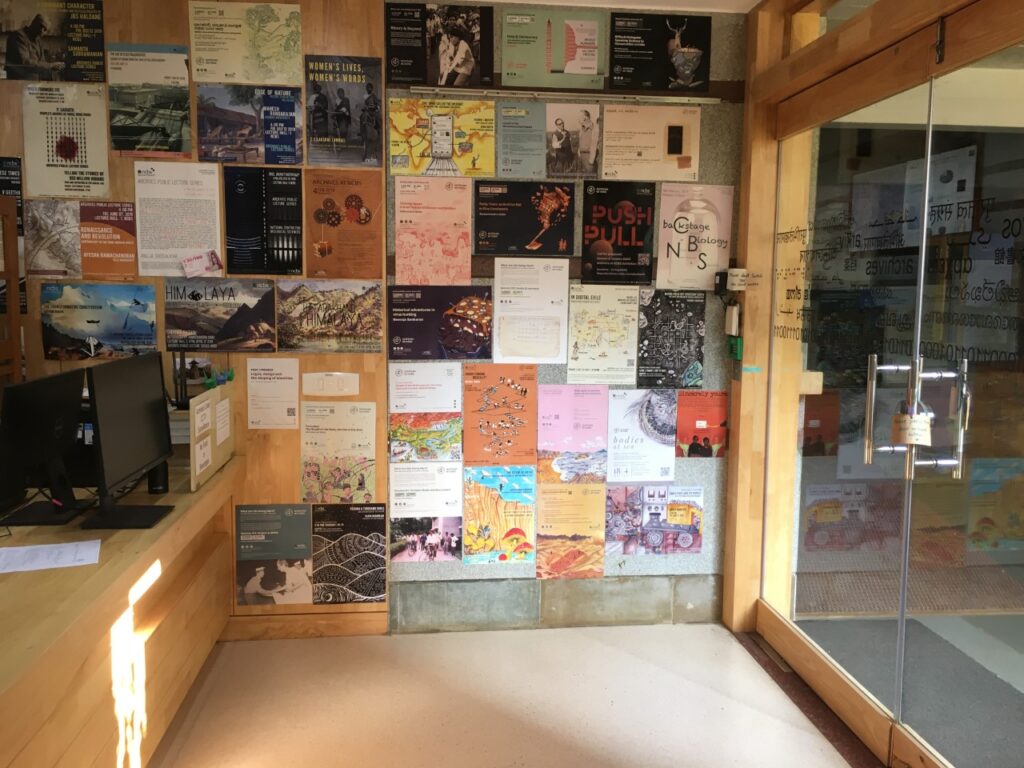In this Lug piece, PhD student Hannah James Louwerse offers some insights on her time researching in the Archives at the National Centre of Biological Sciences in Bangalore, and reflects on the workflows and processes which go into keeping an archive running smoothly.
Between indulging in delicious food and gandering around the stunning campus of the National Centre of Biological Sciences (NCBS), I sit at a hot desk in the basement where the Archives at NCBS is housed. The term ‘basement’ is slightly misleading as the sun shines through windows which face a sunken outdoor amphitheatre, where I can watch paradise birds flirt with each other in the trees. When not distracted by birds or food, my attention might be drawn away from my work by one of the eleven other people working in the Archive. It is the loudest archive I have ever been in, even when I discount the constant humming of the air conditioning. It is also the most welcoming workplace I have ever worked in. The Archives at NCBS is a hub of multidisciplinary folk, all coming together to build this archive, which is still very much in its infancy, celebrating its fourth birthday on this month. Therefore, a lot of the work is focused on growing the archive, with some team members creating a digital catalogue, others expanding the collection, and many involved in developing the various work flows necessary to keep an archive running.

This development of workflows, which I am also playing a role in, is necessary because, like so many organisations in the GLAM (galleries, libraries, archives and museums) sector, the Archives at NCBS is working within the grant cycle. This automatically leads to a lack of consistency under the staff and therefore creates a somewhat unsettled work environment. From February 2019 to February 2023, around 60 interns have passed through the archives’ doors. When I started my conversations with the head of the archives about doing my placement here, the archives team was three people. Now it has grown to twelve, including two archivists, a software developer, various artists in residence and an outreach team. There are also several other researchers who use the Archives’ reading room and offices to work in. What I am witnessing within the walls of the NCBS basement is how the sudden expansion and change within the archive is causing some growing pains. These growing pains should not be considered a negative, but as part of the natural process of building an organisation. They are what is motivating the development of various workflows.
Developing these workflows is necessary because, while the previous team of three were easily able to know exactly what the others were doing, the current members of the archive team are slightly less sure, even though they are all in the same room. By creating workflows, the workers of the archive, new, old, temporary, and permanent, will be supported in their work, allowing the larger work of the archive to be carried easily through the grant cycles and revolving door of many interns. However, this is not an easy task, especially when everyone still needs to carry out their day-to-day work alongside the workflow development. I am, therefore, doing my bit by creating the archives’ notice and takedown workflow. I am looking into how the archives can edit, redact, and remove archival material and capturing this process in a way which is helpful for users of the archives and present and future archivists.

While overall my first month in India has been delightful; filled with lovely weather, delicious food, and a group of generous and considerate co-workers, I will admit it took me some time to find my feet in the work at the archive. At first it was not clear what I should be doing, but now, with the development of the takedown workflow, I have been given direction, and am glad to be here to help the archive through this unsteady and nebulous time. The Archives at NCBS might not know exactly what it is doing right now, but that is okay; no one really knows what they are going to be at the age of four.
